Frequently Asked Questions
Our most asked questions all in one place!
- Heating
- Radiator Valves
- Radiators
- Towel Rails
- Panel Heaters
- Electric Radiators
- Electric Towel Rails
- Bathroom
- Mirrors
- Showers
- Baths
- Delivery
- After Sales
- Glossary
-
Radiator Valves
-
What type of valve options do i have?
The main decision to make is between Standard or Thermostatic valves and is completely up to you dependent on the purpose of the radiator or towel rail installation. However it is recommended that on any system that a set of valves is used on at least one radiator on any given system.
-
What is a thermostatic radiator valve (TRV)?
Thermostatic Radiator Valves also known as TRV's in the trade are self regulating heating valves that can regulate the water entry of a radiator based on the heat of the room. The trv is perfect for any room that you will spend alot of time in and will require the room temperature to be a constant heat.
If you need to be able to set a constant temperature then these are the valves for you
You will find our range of TRV's HERE. -
What orientation of valves do I need for my pipework?
Depending on the way your pipework is installed you will need to match the correct valve with your radiator or towel rail and the alignment of your pipes.
Below is a simple table describing which type of valves you will require based on your radiator/towel rail valve connections and the location of your pipework.Through Wall Pipework Through Floor Pipework Bottom Inlets Angled / Corner radiator valves Straight radiator valve Side Inlets Angled / Corner radiator valves Angled radiator valve
-
Radiators
-
What delta rating are our products listed?
All of our products are listed at delta T50 which is the European standard for BTU heat output ratings. When comparing other products please make sure you check the delta rating the products have been listed as at Delta T60 or T70 these could be greatly inflated. (1000 BTUs @Delta T50 converts to 1264 BTUs @Delta T60 and 1400 BTUs @Delta T70)
-
Bleeding?
-
What does 'Bleeding' mean?
Bleeding is the process of getting rid of any air that has accumulated at the top of the towel rail. This air stops water circulating through all parts of the towel rail. This means that the overall efficiency of the central heating system is therefore reduced and can cost you more.
Bleeding the towel rail involves opening a small valve and allowing any trapped air to be expelled. -
How do I know if I need to bleed my towel rail / radiator
You may notice that the towel rail is not heating up and, specifically, the top rungs of the rail are colder than the bottom ones.
You may also have heard knocking or tinkling through your pipes and radiators. This is usually caused by trapped air and bleeding will normally solve this.
If the issues aren’t rectified by bleeding your heated towel rail then you may need to contact a professional to diagnose the problem. -
How often should I bleed my towel rail / radiator?
For a well-maintained heating system, annual bleeds are fine. It is also advisable to bleed a heated towel rail after any modifications, repairs or when the towel rail feels colder at the top. If you find you are bleeding your towel rail continually, please contact a professional.
-
How do I bleed my towel rail / radiator?
To bleed a heated towel radiator, you will need a few tools:
- A radiator key
- A rag
- A towel
- Firstly, turn off the central heating as otherwise you may soak air back into the system.
- Allow the water inside the towel radiator to cool down for around 20 minutes to ensure you do not run the risk of scalding yourself.
- Ensure the lock-shield and thermostatic radiator valves (TRV’s) are open, if present. To open, remove the caps and open them fully anti-clockwise using a spanner or a hex (Allen) key.
- Find the towel radiator bleed valve. It tends to be at the top of the towel rail but is sometimes at the back. The screws are generally hexagonal or square. Also, many of them have a slot across the front so you can use a slotted screwdriver if a radiator key isn’t available.
- Get your towel or rag and place it on the floor underneath the bleed valve. Using your radiator key turn the bleed nipple anti-clockwise. You should now hear a hissing noise. This is the steam and air leaving the radiator.
- Once the air has left the towel radiator, bubbling water will follow so catch it in a rag and turn the bleed nipple back and close. If the air stops coming out of the radiator but no water follows, your heated towel radiator has most likely run out of pressure completely so this will need to be topped up using the filling loop. Check the water pressure gauge on the boiler and follow the user instructions for your specific boiler to top up the pressure.
-
What does 'Bleeding' mean?
-
What size of radiator do I need for my room?
The size or quantity of radiators you need will vary depending on wide range of criteria including room dimensions, room type, location or windows and brickwork.
Here at NWT we have made this process as simple as possible for you with our: BTU Calculator
Or alternatively give one of our trained technical team a call on 01492573738 -
Why does a chrome plated finish have less BTUs?
Any sparkling chrome plated radiator will give a lower heat output in direct comparison with a model in a painted powder coated finish of any colour. The chrome plating will radiate some of the heat back into the radiator and act as a insulator so to the touch the chrome radiator will be hotter due to the thermal properties of the chrome. However a powder coated paint finish will emit the heat much more efficiently into the room hence the higher BTU ratings.
-
These 2 radiators are similar size why are the heat outputs so different?
There are many factors that will need to be taken into consideration. A few of these are listed below:
-
Tube Diameter: Larger diameter tubes will give off more heat than the same number of smaller diameter tubes.
-
Base Material: Mild steel will give less heat output than an identical aluminium or stainless steel radiator.
-
Finish: Painted finishes give better heat outputs than a chrome plated model.
-
Material Thickness: The thickness of the base material either mild steel, stainless steel or aluminium can greatly effect the heat efficiency of a product.
-
Outer finish: The chrome plating or powder coating process is vital in providing a quality finish to your product in both aesthetics as well as performance. All of our chrome plated products are finished with over 50 microns of chrome. Our powder coating is of the highest quality and undergoes substantial protection testing in house.
-
-
Where is the best location to install my radiator?
The ideal place for a radiator to be located is on an exterior wall, under or next to a window if possible. The cold air coming in through the window is then mixed with the hot air coming up from the radiator, creating efficient circulation and a nice ambient temperature.
-
Cast Iron Radiators?
-
Are cast iron radiators efficient?
Cast Iron Radiators are extremely efficient but differ greatly in characteristics of a mild steel radiator. Cast iron heats up and cools down very slowly so when you first turn your heating on it will take longer for the radiators to heat up than a standard steel radiator.
BUT The main upside to cast iron is that once the heating system is turned off the radiators will maintain the temperature for a much longer period of time. Although your central heating system will initially have to work harder to achieve the desired temperature it is more cost efficient in the long run. -
What guarantee do I get with my cast iron radiator?
All ranges of our cast iron radiators come as standard with a 10 year guarantee. Cast iron products do need to be looked after more which you would expect with a product of greater value and we recommend the use of correct inhibitors within your central heating system. If looked after correctly they should last you a lifetime without any issues.
-
How do I work out how big my cast iron radiator needs to be?
We assemble Cast Iron radiators from 3 sections to 30 sections depending on requirements.
You can work out your heat requirements per room using our Heating Calculator, or send us an email with your room dimensions to info@nwtdirect.co.uk or give us a call on 01492 573738 -
Do I need wall stays?
Yes! You will always need a minimum of x1 wall stay if not 2 or 3. A Wall Stay stabilise the cast iron radiator against the wall and prevents accidental tipping of the radiator which could cause damage/injury.
Any Cst Iron Radiator Under 1.5 Meters should have x1 wall stay, Any radiator over 1.5 meters will need x2 wall stays as a minimum.
See our full range of cast iron wall stays HERE. -
What colours and finishes are available on my cast iron radiator?
Our Cast Iron radiators all come with the option to have the following finishes applied:
- 144 Paints
- 8 Metallic Paints
- 366 Highlight Effects
- Antiqued Effect
- Fully Polished
-
Are cast iron radiators efficient?
-
Towel Rails
-
What size towel rail would be suitable for my bathroom or En-Suite?
The size of the towel rail you need will vary depending on a variety of criteria from how you use the towel rail to the space you have available.
You can easily find out your required BTU's using our BTU Calculator
Or alternatively give our team a call on 01492573738 -
Will a towel rail give out less heat than a radiator?
This is a common misconception, A towel rail will give out the exact same heat as a like for like BTU radiator. However keep in mind that generally towel rails are kept in a bathroom and will have towels hung over them which act as an insulator and heat up the towels before the room! It is key to define if your require your towel rail as a drying aid, a heat source to your room or both when browsing our range.
-
Panel Heaters
-
What size panel heater do I need for my room?
As a very basic rule of thumb we recommend 100W per m² and this is just a guide line only.
For a more accurate figure please visit our heating calculator. -
Do your panel heaters come with thermostats?
All of our panel heaters come with built in ambient room thermostat.
The panel heaters will sample the temperature of the air and will adjust the power consumption they use to regulate the room temperature. -
What is the difference between convection and panel heaters?
There is no difference between the 2 in the way they heat the room, they use the same method of heat exchange. However panel heaters tend to look much nicer than convector heaters and also tend to have more up-to date technology suck as timers and room stats and are more economical due to the way they vary the wattage used to keep a room at a stable temperature.
-
Do any of your heaters come with a timer built in?
Yes the Nova Live S range comes with a full 24/7 timer fully built in and is extremely simple to use.
Also the new Nova Live R range comes with a full 24/7 timer fully built in and is extremely simple to use.
However all the other models can be plugged into a 3 pin timer plug to get this functionality.
-
Electric Radiators
- What is the difference between a single heat element and a thermostatic element?
-
How long is the cable / wire on the heating elements?
All elements cabel lengths are listed in the Technical Specification below the product be are generally between the 90cm - 1.2cm range.
-
Electric Towel Rails
- What is the difference between a single heat element and a thermostatic element?
-
Are there any limitations as to where an electric towel rail in a bathroom can be fitted?
Yes! and the guidelines regarding this are detailed in the IEE wiring regulations 2008.
Firstly, an electrical appliance fitted in a bathroom must have an appropriate IP rating (Ingress Protection) which is a measure of the protection against water infiltration.
Secondly, there are certain areas in the bathroom where the electric towel rail should not be installed. The diagram below, splits the bathroom into 4 different Zones and explains which zones you can and cannot install into.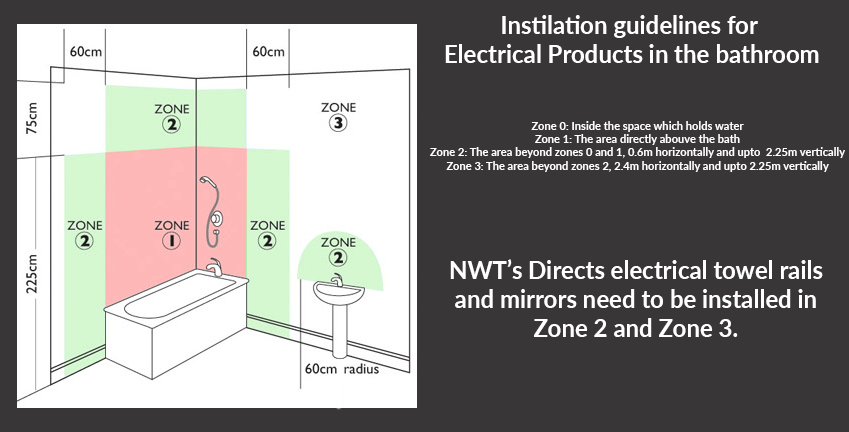
-
How long is the cable / wire on the heating elements?
All elements are supplied with a white 1.2m cable.
-
Mirrors
-
What is the IP rating of your LED bathroom mirrors?
All of our LED mirrors hold a minimum rating of IP44 or better and can be installed in zone 2 and zone 3 within your bathroom.
-
What features do your mirrors have?
All of our mirrors have different features that are listed on the individual product pages but they include all or a combination of the following:
- Infared On/Off Switch
- Soft Close Door Hinges
- Safety Glass Shelves
- Shaver Only Socket
- LED Down,Built In or Strip Lights
- Heated Demister Pads
- Flexible Mounting - Vertical or Horizontal)
-
Which way round can your LED mirrors be installed?
Most of our LED Mirror range can be installed Landscape or Portrait orientation. The individual product pages will show which have this option.
-
Showers
-
What is a mixer shower?
Mixer showers take water from both hot and cold water supplies. They mix the hot and cold water to reach a desired temperature set.
-
What is Thermostatic Shower Valve?
Thermostatic mixing valves
Thermostatically controlled products are available to control accurately the temperature of water for showering, bathing and hand-washing. These valves also maintain the pre-set temperatures even if the water pressure varies when other appliances are used. Installed and maintained correctly, they can significantly reduce the risk of scalding in the home.
Function
Hot and cold water entering the valve is mixed to a temperature pre-selected by the user or installer. This is achieved automatically by a thermally sensitive mechanism within the valve that proportions the amount of hot and cold water entering to produce the required blend. The mechanism then automatically compensates for any variations in supply pressures or temperatures to maintain the pre-selected temperature. In the event of cold water supply failure, the thermostatic mixing mechanism will automatically shut down the flow to prevent discharge of dangerously hot water
Main components
Thermostat
A temperature sensitive element which expands or contracts depending on the temperature of the water surrounding it. When the thermostat senses a temperature change, it moves a piston which changes the proportion of hot and cold water being mixed in the valve. This movement enables the valve to remain stable and to shut down in case of cold or hot water failure.
Piston
Usually connected to the thermostat, the piston moves back and forth over the cold and hot ports of the valve, changing the proportion of hot and cold water entering the valve depending on the temperature of the water. Return spring When the thermostat expands it moves the piston under its own energy and compresses the return spring; when the thermostat is chilled, the thermostat contracts and the return spring pushes the piston back.
Temperature adjustment
Most thermostatic mixing valves have a separate temperature adjustment (usually beneath a lock shield cover). Typically, this can be adjusted to change the position of the piston and therefore the proportion of hot and cold water entering the valve.
-
Baths
-
Do I need bath panels for my NWT bath?
Some of our baths are supplied as standard with bath panels (mainly our range of bow fronted and curved fronted baths and shower baths). Our range of Inset Baths are designed to have an enclosure built for them specifically and for the bath to be inset as per the name. Our Standard Baths are not supplied with bath panels. This allows you to choose the bath panels which suit your bathroom look and installation.
-
What is a Whirlpool Bath?
A Whirlpool bath features jets situated in the walls of the bath. Fed by a venturi, these jets feed a mixture of water and air into the bath to create an invigorating hydro-massage.
-
What is a Airpool Bath?
An Airpool bath features nozzles in the base of the bath which release air bubbles into the water for a gently fizzing massage.
-
What is a Whirlpool / Airpool Bath?
A Whirpool / Airpool bath is the height of luxury which combines the invigorating hydro-massage of a whirlpool installation with the gently fizzing massage of the airpool system.
-
Delivery
-
Shipments
Delivery Timescales and Locations:
All of our products are packed to the highest standards for both domestic and international shipping.
We provide Next Working Day Delivery on orders placed before 2pm on the majority or our stocked products. The following exclusion apply:
Cast Iron Radiators (All) - Approximately 5-7 Days
Vulcan Range (White) - Approximately 2-3 Days
Trojan Range (White) - Approximately 2-3 Days
Korona Range (White) - Approximately 2-3 DaysKudox Radiator & Towel Rail Range - Approximately 1-3 Days
Vulcan Range (Other Colours) 7-10 Days
Trojan Range (Other Colours) 7-10 Days
Korona Range (Other Colours) 7-10 DaysBathroom Furniture - Approximately 2-3 Days
Baths (Standard) - Approximately 2-3 Days
Baths (Whirlpool & Airpool Upgrades) - Approximately 7-10 DaysBath & Shower Screens - Approximately 2-3 Days
UK Mainland Shipping:
The quoted UK postage rates are for UK mainland only, excluding the following areas:
- Scottish Highlands and Islands (Postcodes: AB, DD, FK, IV, KW, PA, PH)
- Northern Ireland
- Isle of Wight
- Isle of Man
- Isle of Scilly
- Channel Islands
- Scottish Isles
- Jersey
- Guernsey
*If you live in the above areas, please feel free to contact us and we will send you our best quotation for shipping which is based on volumetric weight of your order.
International Shipping:
We are more than happy to delivery internationally. Please contact us using the International Shipping Quote form for a quotation. We will try and get the best prices possible for shipping.
-
After Sales
-
Returns due to courier damages
PLEASE NOTE: It is your responsibility as the buyer to check the condition of the goods upon delivery before signing for them. All goods must be signed for by an adult aged 18 years or over on delivery.
The courier is obliged to wait whilst the goods are inspected. If the courier will not wait, please accept and sign as "UNCHECKED" OR "DAMAGED". If you sign the courier’s paperwork to say it has been received in good condition any insurance claims for damage in transit maybe void.
In the unlikely event that your product(s) arrive damaged we would firstly like to apologise for any inconvenience caused. Following you signing for the goods as "UNCHECKED" OR "DAMAGED" and you are within the 14 days from receipt of your order then please complete the online Return Request.On receipt of the return request being completed, NWT will then contact via email requesting supporting images/videos evidence relating to the reported damage and the procedure to have the product collected for return to NWT.
On receipt of the item being returned to NWT we will action a replacement OR refund as originally requested.
-
Return due to fault (Within Guarantee)
In the unlikely event that your product is received faulty or has developed a fault, we would firstly like to apologise for any inconvenience this may have caused. In the first instance, please complete the online Return Request. Please fill out all the information required with as much detail as possible and select if a replacement or refund is preferred.
On receipt of the return request being completed, NWT will then contact via email requesting supporting images/videos evidence relating to the reported fault. If the fault and product are not clearly visible from the evidence provided then we may require the items returned for further inspection in person.
On confirmation of the fault being passed by returns, we will then arrange a free of charge replacement OR a full refund to be issued depending on your chosen return request option. Refunds will be issued via your original payment method. We have 30 days to reimburse your funds but in most cases we can refund within 48/72 hours pack through your chosen payment method.
PLEASE NOTE: Our product guarantee only covers the replacement of the physical product. Under no circumstances do we cover tradeperson fees in relation to any installation work. We are a supply only company and do not offer a supply and install service.
If the original notification of the product fault falls outside of the product guarantee then no replacement or refund will be available. The product guarantee starts from the date of purchase.
-
Returns due to Cancellation of Order (Change of Mind)
Under the Consumer Rights Act 2015, you have the right to cancel your order for any item purchased through this sales platform within 14 days of receiving your goods. This entitles you to a full refund, excluding the cost of delivery incurred by NWT to originally send your order, as well as any restocking fees associated with the return. The refund will be issued provided you take reasonable care of the goods while they are in your possession and return the goods unopened, unused, unfitted, and in perfect condition for resale (including the packaging).
If you would like to return the goods you have received you need to notify us within the 14 days from the date you received the goods and complete the online Return Request. Under the consumer rights act you then have a further 14 days to arrange this return and the goods to be received back at NWT at the address below:
FAO: Returns
NWT Direct (Conwy) Ltd
Unit 5
Parc Caer Seion
Conwy
LL32 8FAWhen organising the return goods for cancellation, if this cannot be done in person then please consider the courier which you use and the insurance that you choose to take out against the return delivery. If the goods arrive back at NWT damaged or missing parts the delivery will be refused by our warehouse and the product/s will be returned back to yourself. You will then have to start a claim with your chosen courier.
Once the goods are returned back to NWT and they have been signed of as OK for resale this can be passed over for a refund. We have 30 days to reimburse your funds but in most cases we can refund within 48/72 hours pack through your chosen payment method.
Exceptions of the right to cancel your order relate to products that have been custom made. By purchasing any of the products listed below you agree to the separate terms and conditions in place for these products.
3a. Return of Cast Iron Radiators:
We offer a 14 days returns notification period as per the Consumer Rights Act on our full range of cast iron radiators from date of delivery. You will be responsible for the return delivery of the product back to us in perfect re-sellable condition (as in point 3) but will be subject to a 50% custom made restocking charge against your order total.
3b. Return of Whirlpool or Airpool Upgrade Baths:
We offer a 14 days returns notification period as per the Consumer Rights Act on our full range of Whirlpool & Airpool Upgrade Baths from date of delivery. You will be responsible for the return delivery of the product back to us in perfect re-sellable condition (as in point 3) but will be subject to a 50% custom made restocking charge against your order total.
3c. Return of Branded Products:
We offer a 14 days returns notification period as per the Consumer Rights Act on our full range of all branded products as listed below from date of delivery. You will be responsible for the return delivery of the product back to us in perfect re-sellable condition (as in point 3) but will be subject to a 25% custom made restocking charge against your order total.
- Aeon
- Carisa
- Celsi
- Consort Claudgen
- Dimplex
- Heat Outdoors
- Hudson Reed
- Kudox
- Nuie
- Frontline
- Ultraheat
- Showerwall
- Multipanel
- Zenn Bathrooms
- Fibo
3d. Return of Custom Products:
We offer a 14 days returns notification period as per the Consumer Rights Act on our full range of all custom products as listed below from date of delivery. You will be responsible for the return delivery of the product back to us in perfect re-sellable condition (as in point 3) but will be subject to a 50% custom made restocking charge against your order total.
-
Notification of Missing Parts:
If any products or specific parts within your product are missing, we must be notified within 14 days of receipt of the order. PLEASE NOTE: Notification of missing parts over 14 days from the date you signed for the products will not be accepted.
-
Glossary
| Airlock | A stoppage of the flow in your heating system caused by an air pocket resulting in no, or very little flow of liquid along the section of heating system. |
| Angled Valves | Angled radiator valves are for controlling the flow on your heating system, the fluid leaves at 90 degree right angles to the direction in which it enters the valve. |
| Blank Plug | A plug fitted to an un-used tapping on a radiator or towel rail for closing that opening. |
| Bleed Valve / Bleed Plug | A plug fitted to the tapping at the top of a radiator or towel rail which is used to release trapped air from that radiator. |
| BTU (British Thermal Units) | Also known as British Thermal Units. The unit is used to measure the heat output of a radiator. The British thermal unit is a traditional unit of work equal to about 1055 joules. It is the amount of work needed to raise the temperature of one pound of water by one degree Fahrenheit. |
| Combi Boiler | A heating unit which combines both a central heating water a heat exchanger and a domestic water heater in one compact, self-contained unit. Unlike a vented heating and hot water system, a combi boiler does not store hot water, rather it heats water as and when required either directly from the cold mains (for the domestic hot water) or within a pressurised 'sealed' central heating loop. |
| Convection | The movement caused within a fluid by the tendency of hotter and therefore less dense material to rise, and colder, denser material to sink under the influence of gravity, which consequently results in transfer of heat. |
| Central Heating | A system for heating a building by heating water or air in one place and circulating it through pipes, radiators, towel rails or vents. |
| Closed System | A central heating system which is closed to the external water supply. Most newer systems are designed this way as it helps prevent oxidization from fresh water. Most closed systems will have rust inhibitor and boiler noise silencer added to it. |
| Delta | The measurement in which heat output is measured, whereby the temperature of the room is compared against the internal temperature of the radiator. |
| Dual Fuel | Typically found in towel rails where either an element or the central heating system can be used as the heat source, as both are connected through use of a T-Piece or dual fuel valves. The electrical element would be used in the summertime when the central heating system isn't in use. |
| Element | A probe inserted into a radiator with which it heats the solution in electric radiators. |
| Fins | Metal extrusions that are shaped in a way that help convect the heat from a radiator |
| Flow and Return | In a central heating system, the water flows into the radiators on one side and returns to the system to be heated up again out of the other side. |
| IP Rating | Also known as Ingress Protection rating. This is the international standard used to define levels of sealing effectiveness of electrical enclosures against intrusion from foreign bodies including dirt and moisture. |
| Lockshield | A radiator valve used to balance the system by restricting the flow of water on the return side. |
| Micro Bore | A narrow tubing with an outside diameter of 10 millimetres or less. |
| Open System | A central heating system which is open to the atmosphere and has a feed and expansion tank. |
| Pipe Centres | The distance between the entry tappings on the radiator. |
| Pressure | The pressure of water running through a central heating system. |
| PTFE Tape | A sealing tape made from Polytetrafluorethylene, used around the tapping threads to ensure a water tight seal between the radiator and the valve. |
| Radiator | Devices in which a liquid circulates through which are designed to heat a room space. |
| Rust Inhibitor | A solution added to a central heating system or an electric radiator (closed unit) to minimise the prevent any material within from rusting. |
| Straight Valves | Straight radiator valves are for use on radiators with underside connections where the pipes are coming out of the floor. |
| T-Piece | T-shaped component when used in conjunction with an electrical element allows you to run your radiator or towel rail on dual fuel |
| Tails and Sleeve Kits | The copper pipes that are connected to the designer radiator. |
| Tappings | The thread cut into the radiator where the radiator valves/element will screw into. |
| Thermostatic | Whereby heat is regulated to reach and maintain a desired temperature. |
| Thermostatic Valves (TRV) | Thermostatic radiator valves automatically open and close as necessary to achieve the pre-set room air temperature. |
| Towel Radiator | A towel radiator is designed specifically to warm towels as well as a room, often used in bathrooms or kitchens. |
| Valve Entry | The thread created in the radiator where the valves/element will screw into. |
| Wall to Pipe Center | The distance from the wall to the centre of the tapping. |
| Watts | Electric rating, which can be used to specify the electric current. Heat outputs can also be given in Watts and Kilo Watts. Watts = BTU divided by 3.41. |

